High ceiling lighting
High lumen output LED downlights are designed for use in buildings with high ceilings. These light fixtures find their footprint in grand lobbies, convention centers, banquet halls, airport terminals, train stations, shopping malls, theatres, churches (cathedrals), and atriums. The integration of lighting and architecture as well as hard-to-reach ceilings and expansive spaces create significant lighting challenges in high ceiling buildings where the fixture mounting height is often greater than 20 ft (6.1m). Ceiling light fixtures to be installed in these architecturally significant buildings must deliver excellence in aesthetics, performance, efficiency and reliability simultaneously.
Powerful illumination, architectural integration
High ceiling LED downlights are high power LED systems that deliver 3000 to 16000 lumen packages. They’re similar to high bay lights that are commonly used for general lighting in industrial and commercial facilities when it comes to light output. However, LED downlights are imposed with more stringent design requirements on light distribution, glare control, and architectural integration. These fixtures are typically designed for recessed installation but may also come in cylinder configurations for surface, pendant or wall mounted applications. Recessed downlights are deliberately toned down to blend in with the architecture. With pure, straight lines and minimalist forms, cylinder downlights radiate simplicity, refinement and sophistication that are embraced by modern and contemporary designs.
Design and construction
A typical high ceiling LED downlight consists of a housing, a light engine and a trim. In North America, recessed housings to be installed into ceilings with thermal insulation must be insulation contact (IC) rated for direct contact with the blown cellulose, fiberglass batting or spray-foam insulation. Recessed luminaires that use non-IC rated housings require a minimum of 3-inch clearance from thermal insulation. The solid state compactness of LED packages enables a low profile system design, which leaves an adequate clearance for non-IC installations. This feature, combined with the need for integrated design of LED systems, drives the trend of canless recessed lighting which eliminates the use of IC boxes or plaster trays.
Thermal management
Both the canless LED downlight and the LED light engine of an IC-rated downlight implement a fixture-as-heat-sink design. Thermal management is the most critical consideration for a high power LED system that generates a tremendous amount of waste heat in the semiconductor junction of the LEDs. Failure to keep the junction temperature under control will accelerate the kinetics of thermal degradation of phosphors and other package materials used in white LEDs. Operating LEDs continuously at elevated temperatures can lead to irreversible efficiency degradation and chromaticity shift of the LEDs and ultimately reduced LED life. The fixture-as-heat-sink design minimizes the length of the thermal path and maximizes the effective surface area of the thermal path for more effective heat transfer from the LED junction to the ambient air.
The thermal transfer rate of the high power LED downlight must be dimensioned to outpace the applied power load so that there is no thermal buildup within the LED. This requires the heat sink to be built with an adequate conduction and convection capacity. The heat sink is typically made of die cast, extruded or forged aluminum. It often features a “finned” design which increases the surface area available for convective heat transfer. To dissipate very high heat flux densities, a heat pipe system may be added to the passive heat sink.
Light source
Different considerations need to be balanced when selecting a light source for use in high ceiling LED downlights. Mid-power SMD LEDs have the highest luminous efficacy among all type of LEDs, but they may suffer from rapid lumen depreciation and color shift when operated under high thermal stresses. High power LEDs have the most robust thermal performance. High light output and high reliability even at high operating temperatures and drive currents enable long life operation of high lumen LED systems that is not possible with mid-power LEDs. The enormous advantage of chip-on-board (COB) LEDs lies in the uniformity of the light emission, an outstanding center beam candle power (CBCP), and a high lumen output from a single LED package.
Color quality
High power LED systems typically use light sources with the color rendering index (CRI) in the mid 80s. There’s a tradeoff between the luminous efficacy and color quality of the LEDs. Since a high luminous efficacy is more economically viable, the color quality is often traded for the efficacy in high power LED systems. The 80 CRI light source is considered acceptable for general lighting applications. Applications where color discrimination is a priority require the use of a light source with a 90 CRI and good rendering ability of saturated colors (R9-R14). This means the light source must have a balanced distribution of radiant energy across the wavelength range of the visible spectrum. Available in 2700K, 3000K, 3500K, 4000K, and 5000K color options, the correlated color temperature (CCT) of the light source must be carefully selected to ensure that an effective ambience can be created. Color consistency from fixture to fixture is a critical detail in architectural lighting. LEDs must be binned with a tight chromaticity specification to keep variations of color of a particular group of LEDs within defined acceptance criteria.
Driver circuitry
On the front end is the constant current LED driver that converts alternating current (AC) line power to a voltage and current compatible with the LED load, and may incorporate control functions such as dimming, occupancy sensing, software-based zoning, and wireless control by smartphone app. The LED driver deserves the utmost attention because the two most important performance variables of a high wattage lighting system—efficiency and reliability—are largely dependent on this component.
The LED driver that is used to operate a high wattage LED light engine is typically configured as a switched-mode power supply (SMPS) and incorporates power factor correction (PFC) on the primary side. The driver must be designed to delivers high efficiency, minimal current ripples, high power factor, and low harmonic distortion through the entire load range. The driver circuitry must also implement measures to protect downstream components from power surge, short circuit, and electrical/thermal overload conditions.
The service life of the LED driver should match that of the light source. Special consideration should be given to the thermal stability of the electrolytic capacitor which is considered as the weakest component in single- and two-stage LED drivers.
Light distribution
High ceiling LED downlights come in both round and square aperture options with an abundance of trim options. The trim of common use is a reflector that houses a regressed diffusing lens. The combined use of the reflector and lens enables the luminaire to produce a tightly controlled beam of uniformly distributed light while eliminating high angle glare. The light distribution produced by downlight optical system comes in variations of narrow to wide beam. Wall wash trims are also available to produce asymmetrical light distributions for homogeneous illumination of vertical surfaces.

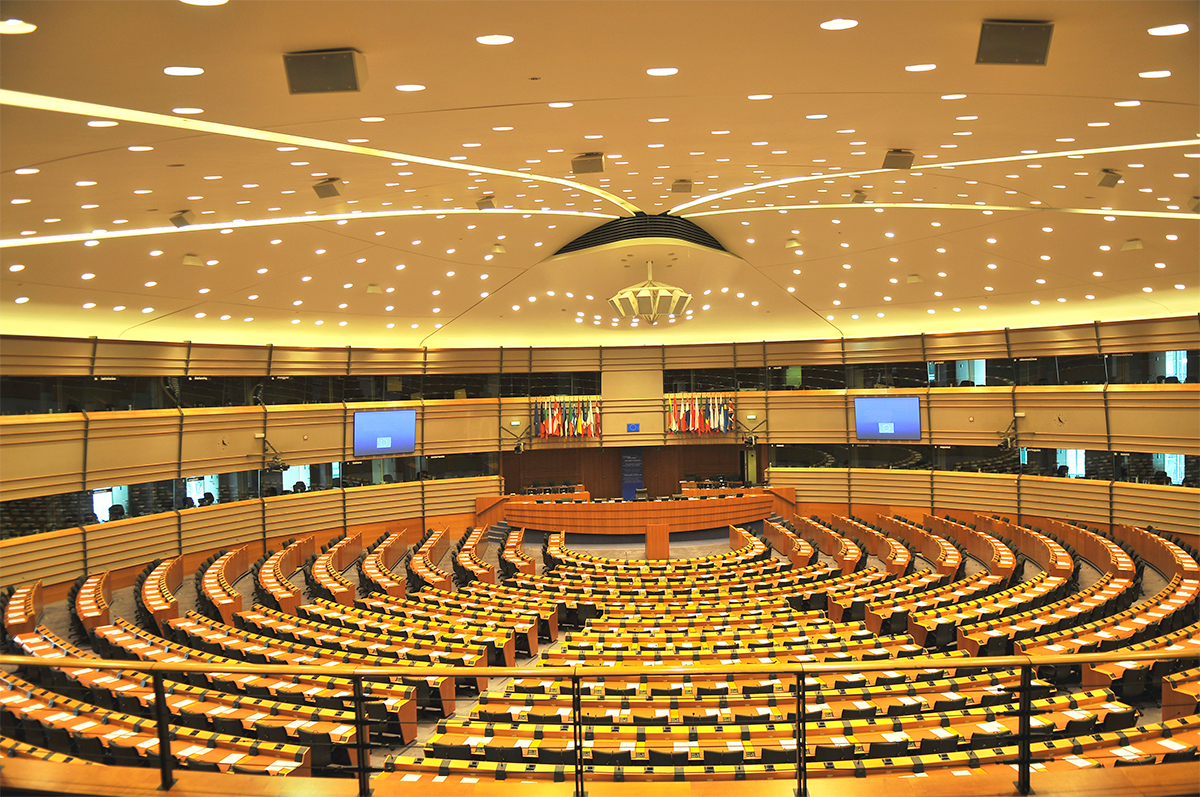
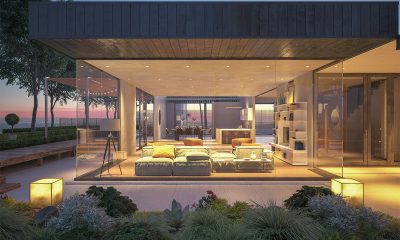
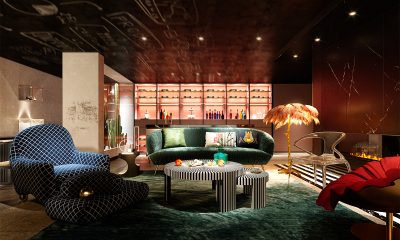


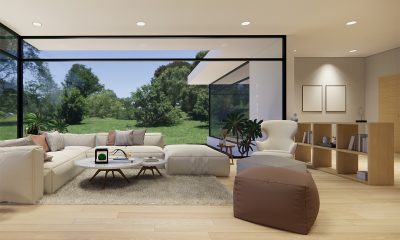
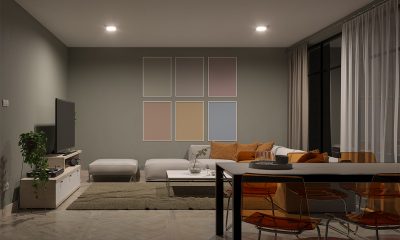


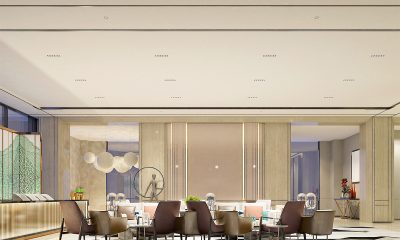
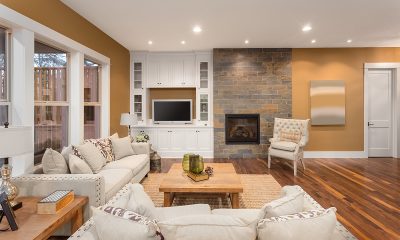

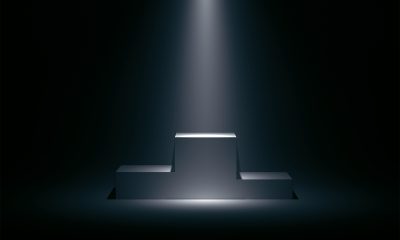





Loading...